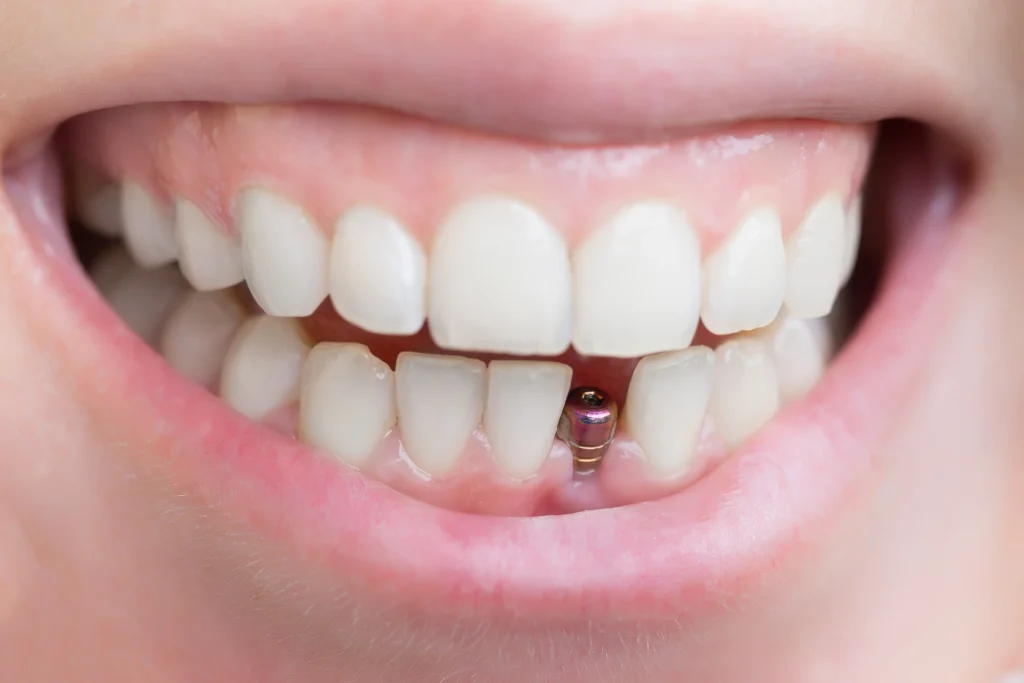Dental implants are a long-term solution for missing teeth, offering a natural appearance and strong bite function. However, not everyone is immediately a candidate for dental implants. In some cases, bone grafting is required before implant placement to ensure a solid foundation for the artificial tooth. But when exactly is bone grafting needed, and why?
In this article, we’ll explore the purpose of bone grafting, the reasons it’s necessary for certain patients, and what to expect from the procedure.
What Is Bone Grafting?
Bone grafting is a surgical procedure that rebuilds or replaces lost bone in the jaw. A bone graft provides the volume and density needed to support a dental implant. The grafted bone may come from:
- Autograft: Your own bone (often from the hip, chin, or another jaw area)
- Allograft: Processed bone from a human donor
- Xenograft: Bone from an animal source, typically bovine (cow)
- Alloplast: Synthetic bone substitute made from biocompatible materials
Over time, the graft material integrates with your natural bone, creating a strong base for implant placement.
Why Bone Loss Happens
Before understanding when bone grafting is needed, it helps to know why bone loss occurs in the first place. The jawbone requires regular stimulation from teeth to maintain its volume and strength. When a tooth is lost or extracted, the bone in that area begins to resorb (shrink) due to lack of stimulation.
Other causes of bone loss include:
- Gum disease (periodontitis)
- Trauma or injury
- Developmental defects
- Tooth extraction without implant placement
- Long-term denture wear without support
When Is Bone Grafting Needed for Dental Implants?
Not everyone needs a bone graft before receiving a dental implant. However, bone grafting is often necessary in the following scenarios:
1. Insufficient Bone Volume
If the jawbone is too narrow or shallow to securely anchor a dental implant, a bone graft can build up the area and provide the necessary stability.
2. Delayed Implant Placement
If a tooth has been missing for several months or years, the bone in that area may have resorbed significantly. Grafting restores lost bone before implant placement.
3. Tooth Extractions
In some cases, bone grafting is performed at the same time as a tooth extraction to preserve the bone for future implants. This is known as socket preservation.
4. Sinus Lift for Upper Jaw Implants
When placing implants in the upper back jaw, especially near the sinuses, a special type of bone graft called a sinus lift may be necessary to create enough room and bone height for the implant.
What to Expect During a Bone Graft Procedure
The bone grafting process will vary depending on the extent of bone loss and the type of graft being used. Here’s a general outline:
- Consultation and Imaging: Your dentist or oral surgeon will assess your jawbone using X-rays or a CBCT scan.
- Anesthesia: The procedure is typically done under local anesthesia, with sedation options available.
- Graft Placement: The grafting material is placed in the deficient area and secured.
- Healing Time: It usually takes 3 to 6 months for the graft to integrate with the natural bone, depending on the case.
- Implant Placement: Once healed, the dental implant can be placed into the newly reinforced bone.
Is Bone Grafting Painful?
Most patients report mild discomfort following a bone graft, similar to having a tooth pulled. Swelling and minor soreness are common but manageable with over-the-counter pain medications and aftercare instructions provided by your dentist or oral surgeon.
Benefits of Bone Grafting Before Dental Implants
- Ensures implant success and longevity
- Improves facial structure and aesthetics
- Prevents future bone deterioration
- Expands treatment options for patients with bone loss
Final Thoughts
If you’re considering dental implants but have been told you don’t have enough bone, don’t worry—bone grafting can make implants a reality. It’s a safe, effective procedure that enhances the strength and structure of your jaw, ensuring a successful, long-lasting outcome.
Talk to your dental implant specialist to determine if bone grafting is right for you. With today’s advancements in dental technology, even patients with significant bone loss can enjoy the benefits of a healthy, confident smile.




